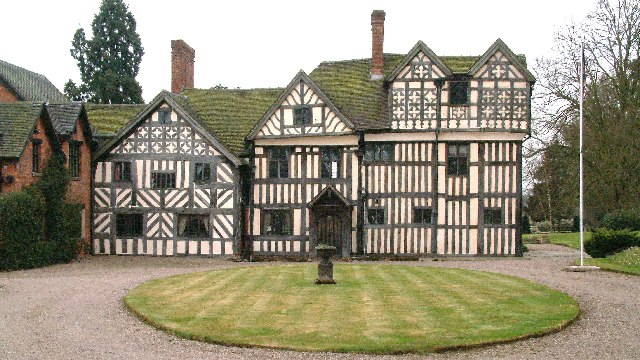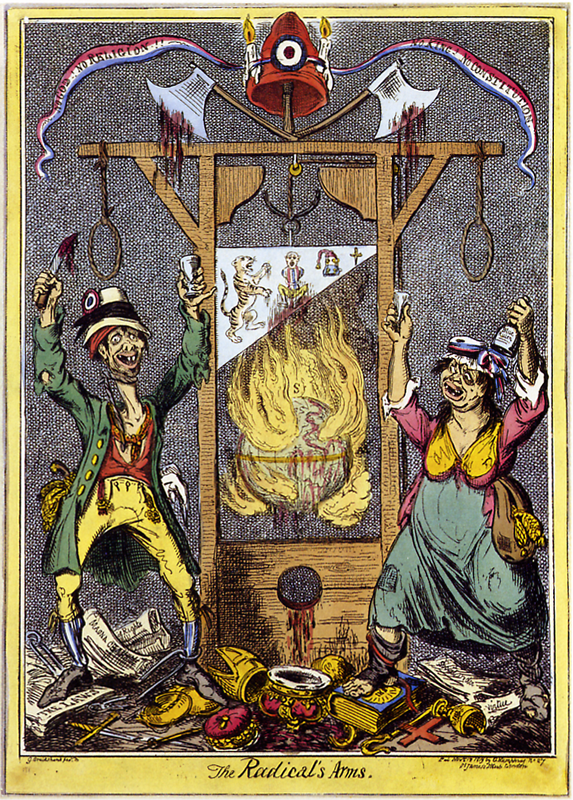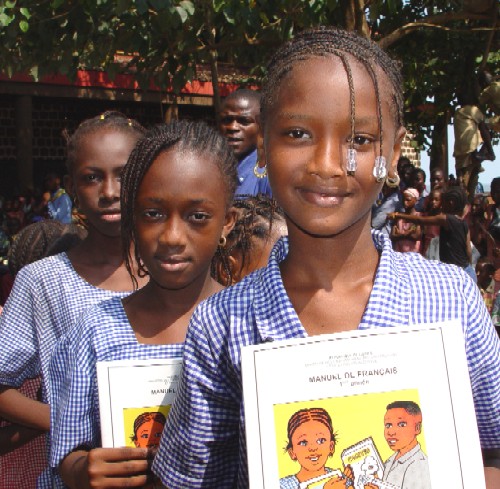|
Maria Elizabetha Jacson
Maria Elizabetha Jacson (1755 – 10 October 1829) was an eighteenth-century English writer, as was her sister, Frances Jacson (1754–1842), known for her books on botany at a time when there were significant obstacles to women's authorship. In some sources her name appears as Maria Jackson, Mary Jackson or Mary Elizabeth Jackson.A number of sources confuse Miss Mary E Jacson of Somersal with Miss Mary A(nn) Jackson of Lichfield (fl. 1830s–1840s), botanical illustrator, daughter of John Jackson of the Lichfield Botanical Society and author of ''Botanical Terms illustrated'' (1842) and ''Pictorial Flora'' (1840) She spent most of her life in Cheshire and Derbyshire, where she lived with her sister following her father's death. Social conventions of the time obliged her to publish anonymously. She was influenced by Erasmus Darwin at a time when the new but controversial sexual classification of plants proposed by Linnaeus was becoming known in England. She published four bo ... [...More Info...] [...Related Items...] OR: [Wikipedia] [Google] [Baidu] |
Bebington
Bebington () is a town and unparished area within the Metropolitan Borough of Wirral, in Merseyside, England. Historically part of Cheshire, it lies south of Liverpool, close to the River Mersey on the eastern side of the Wirral Peninsula. Nearby towns include Birkenhead and Wallasey to the north-northwest, and Heswall to the west-southwest. Bebington railway station opened in 1838 and is situated on the Wirral line of the Merseyrail network. The electoral ward, which includes the original village centres of Higher Bebington and Lower Bebington, had a total resident population of 13,720 at the 2001 census. which increased to 15,768 at the 2011 census. Some definitions of Bebington include adjoining areas such as Port Sunlight (an early planned factory town), New Ferry, Spital and Storeton. The former Municipal Borough of Bebington, a local authority between 1937 and 1974, also included within its boundaries Bromborough, Eastham, Raby, Thornton Hough and Brimstage, which ... [...More Info...] [...Related Items...] OR: [Wikipedia] [Google] [Baidu] |
Age Of Enlightenment
The Age of Enlightenment or the Enlightenment; german: Aufklärung, "Enlightenment"; it, L'Illuminismo, "Enlightenment"; pl, Oświecenie, "Enlightenment"; pt, Iluminismo, "Enlightenment"; es, La Ilustración, "Enlightenment" was an intellectual and philosophical movement that dominated Europe in the 17th and 18th centuries with global influences and effects. The Enlightenment included a range of ideas centered on the value of human happiness, the pursuit of knowledge obtained by means of reason and the evidence of the senses, and ideals such as liberty, progress, toleration, fraternity, and constitutional government. The Enlightenment was preceded by the Scientific Revolution and the work of Francis Bacon, John Locke, and others. Some date the beginning of the Enlightenment to the publication of René Descartes' ''Discourse on the Method'' in 1637, featuring his famous dictum, ''Cogito, ergo sum'' ("I think, therefore I am"). Others cite the publication of Isaac Newto ... [...More Info...] [...Related Items...] OR: [Wikipedia] [Google] [Baidu] |
Stamen
The stamen (plural ''stamina'' or ''stamens'') is the pollen-producing reproductive organ of a flower. Collectively the stamens form the androecium., p. 10 Morphology and terminology A stamen typically consists of a stalk called the filament and an anther which contains ''sporangium, microsporangia''. Most commonly anthers are two-lobed and are attached to the filament either at the base or in the middle area of the anther. The sterile tissue between the lobes is called the connective, an extension of the filament containing conducting strands. It can be seen as an extension on the dorsal side of the anther. A pollen grain develops from a microspore in the microsporangium and contains the male gametophyte. The stamens in a flower are collectively called the androecium. The androecium can consist of as few as one-half stamen (i.e. a single locule) as in ''Canna (plant), Canna'' species or as many as 3,482 stamens which have been counted in the saguaro (''Carnegiea gigantea'' ... [...More Info...] [...Related Items...] OR: [Wikipedia] [Google] [Baidu] |
Pistil
Gynoecium (; ) is most commonly used as a collective term for the parts of a flower that produce ovules and ultimately develop into the fruit and seeds. The gynoecium is the innermost whorl of a flower; it consists of (one or more) ''pistils'' and is typically surrounded by the pollen-producing reproductive organs, the stamens, collectively called the androecium. The gynoecium is often referred to as the "female" portion of the flower, although rather than directly producing female gametes (i.e. egg cells), the gynoecium produces megaspores, each of which develops into a female gametophyte which then produces egg cells. The term gynoecium is also used by botanists to refer to a cluster of archegonia and any associated modified leaves or stems present on a gametophyte shoot in mosses, liverworts, and hornworts. The corresponding terms for the male parts of those plants are clusters of antheridia within the androecium. Flowers that bear a gynoecium but no stamens are calle ... [...More Info...] [...Related Items...] OR: [Wikipedia] [Google] [Baidu] |
Linnaean Taxonomy
Linnaean taxonomy can mean either of two related concepts: # The particular form of biological classification (taxonomy) set up by Carl Linnaeus, as set forth in his ''Systema Naturae'' (1735) and subsequent works. In the taxonomy of Linnaeus there are three kingdoms, divided into ''classes'', and they, in turn, into lower ranks in a hierarchical order. # A term for rank-based classification of organisms, in general. That is, taxonomy in the traditional sense of the word: rank-based scientific classification. This term is especially used as opposed to cladistic systematics, which groups organisms into clades. It is attributed to Linnaeus, although he neither invented the concept of ranked classification (it goes back to Plato and Aristotle) nor gave it its present form. In fact, it does not have an exact present form, as "Linnaean taxonomy" as such does not really exist: it is a collective (abstracting) term for what actually are several separate fields, which use similar approac ... [...More Info...] [...Related Items...] OR: [Wikipedia] [Google] [Baidu] |
The Unsex'd Females
''The Unsex'd Females, a Poem'' (1798), by Richard Polwhele, is a polemical intervention into the public debates over the role of women at the end of the 18th century. The poem is primarily concerned with what Polwhele characterizes as the encroachment of radical French political and philosophical ideas into British society, particularly those associated with the Enlightenment. These subjects come together, for Polwhele, in the revolutionary figure of Mary Wollstonecraft. The poem is of interest to those interested in the history of women, as well as revolutionary politics, and is an example of the British backlash against the ideals of the French Revolution; it is representative of the strategic conflation of women writers with revolutionary ideals during this period; and it helps illuminate the obstacles faced by women writers at the end of the 18th century. Historical context Responding to women authors according to presumptions about their sexuality has a long history; a comp ... [...More Info...] [...Related Items...] OR: [Wikipedia] [Google] [Baidu] |
Richard Polwhele
Richard Polwhele (6 January 1760 – 12 March 1838) was a Cornish people, Cornish clergyman, poetry, poet and historian of Cornwall and Devon. Biography Richard Polwhele's ancestors long held the manor of Treworgan, 4 3/4 miles south-east of Truro in Cornwall, which family bore as arms: ''Sable, a saltire engrailed ermine''. He was born at Truro, Cornwall, and met literary luminaries Catharine Macaulay and Hannah More at an early age. He was educated at Truro Grammar School, where he precociously published ''The Fate of Llewellyn''. He went on to Christ Church, Oxford, continuing to write poetry, but left without taking a degree. In 1782 he was ordained a curate, married Loveday Warren, and moved to a curacy at Kenton, Devon. On his wife's death in 1793, Polwhele was left with three children. Later that year he married Mary Tyrrell, briefly taking up a curacy at Exmouth, Devon, Exmouth before being appointed to the small living of Manaccan in Cornwall in 1794. From 1806, when ... [...More Info...] [...Related Items...] OR: [Wikipedia] [Google] [Baidu] |
Female Education
Female education is a catch-all term of a complex set of issues and debates surrounding education (primary education, secondary education, tertiary education, and health education in particular) for girls and women. It is frequently called girls' education or women's education. It includes areas of gender equality and access to education. The education of women and girls is important connection to the alleviation of poverty. Broader related topics include single-sex education and religious education for women, in which education is divided gender lines. Inequalities in education for girls and women are complex: women and girls face explicit barriers to entry to school, for example, violence against women or prohibitions of girls from going to school, while other problems are more systematic and less explicit, for example, science, technology, engineering and mathematics (STEM) education disparities are deep rooted, even in Europe and North America. In some Western countries, w ... [...More Info...] [...Related Items...] OR: [Wikipedia] [Google] [Baidu] |
Venus Fly-trap
The Venus flytrap (''Dionaea muscipula'') is a carnivorous plant native to subtropical wetlands on the East Coast of the United States in North Carolina and South Carolina. It catches its prey—chiefly insects and arachnids—with a trapping structure formed by the terminal portion of each of the plant's leaves, which is triggered by tiny hairs (called "trigger hairs" or "sensitive hairs") on their inner surfaces. When an insect or spider crawling along the leaves contacts a hair, the trap prepares to close, snapping shut only if another contact occurs within approximately twenty seconds of the first strike. Triggers may occur with a tenth of a second of contact. The requirement of redundant triggering in this mechanism serves as a safeguard against wasting energy by trapping objects with no nutritional value, and the plant will only begin digestion after five more stimuli to ensure it has caught a live bug worthy of consumption. ''Dionaea'' is a monotypic genus closely relat ... [...More Info...] [...Related Items...] OR: [Wikipedia] [Google] [Baidu] |
Sketches Maria Jacson Plate 10 Figure 4
Sketch or Sketches may refer to: * Sketch (drawing), a rapidly executed freehand drawing that is not usually intended as a finished work Arts, entertainment and media * Sketch comedy, a series of short scenes or vignettes called sketches Film and television * Sketch (2007 film), ''Sketch'' (2007 film), a Malayalam film * Sketch (2018 film), ''Sketch'' (2018 film), a Tamil film * Sketch (TV series), ''Sketch'' (TV series), a 2018 South Korean series * "Sketch", a 2008 List of Skins episodes#Series 2 (2008), episode of ''Skins'' ** Sketch (Skins character), Sketch (''Skins'' character) * Sketch with Kevin McDonald, a 2006 CBC television special Literature * Sketch story, or sketch, a very short piece of writing * ''Daily Sketch'', a British newspaper 1909–1971 * ''The Sketch'', a British illustrated weekly journal 1893–1959 Music * Sketch (music), an informal document prepared by a composer to assist in composition * The Sketches, a Pakistani Sufi folk rock band * Sketc ... [...More Info...] [...Related Items...] OR: [Wikipedia] [Google] [Baidu] |
Sketches Maria Jacson
Sketch or Sketches may refer to: * Sketch (drawing), a rapidly executed freehand drawing that is not usually intended as a finished work Arts, entertainment and media * Sketch comedy, a series of short scenes or vignettes called sketches Film and television * ''Sketch'' (2007 film), a Malayalam film * ''Sketch'' (2018 film), a Tamil film * ''Sketch'' (TV series), a 2018 South Korean series * "Sketch", a 2008 episode of ''Skins'' ** Sketch (''Skins'' character) * Sketch with Kevin McDonald, a 2006 CBC television special Literature * Sketch story, or sketch, a very short piece of writing * ''Daily Sketch'', a British newspaper 1909–1971 * ''The Sketch'', a British illustrated weekly journal 1893–1959 Music * Sketch (music), an informal document prepared by a composer to assist in composition * The Sketches, a Pakistani Sufi folk rock band * ''Sketch'' (album), by Ex Norwegian, 2011 * ''Sketch'' (EP), by Hyomin, 2016 * ''Sketches'' (album), by Bert Jansch, 1990 ... [...More Info...] [...Related Items...] OR: [Wikipedia] [Google] [Baidu] |
Astle Hall
Astle Hall is a former country house house located near Chelford, Cheshire in the North West of England. The hall has been demolished; its parkland and a lodge survive.Clare Hartwell, Matthew Hyde, Edward Hubbard, Nikolaus Pevsner (2011), ''Cheshire''. ''The Buildings of England'', p. 209 (Yale University Press) ()de Figueiredo P., Treuherz J. ''Cheshire Country Houses'', pp. 213–14 (Phillimore; 1988) () History The hall dated from the late 18th or early 19th century, and was probably constructed or rebuilt for Thomas Parker (died 1840). It was described by George Ormerod in his 1819 history of the county: "Astle Hall, which has been much enlarged and improved by the present proprietor, is a handsome and spacious edifice situated amongst extensive and well-timbered grounds. At a short distance from the house is a large artificial piece of water, which assumes from its extent and variety of outline the appearance of a natural lake." By 1850 it was occupied by John Dixon, and pass ... [...More Info...] [...Related Items...] OR: [Wikipedia] [Google] [Baidu] |







